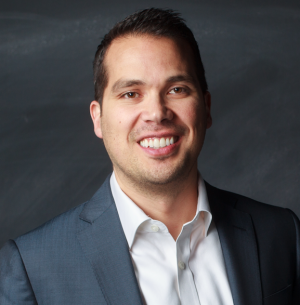Biglaw’s Blockbuster Moment
Biglaw needs to get over itself and start looking to the larger business world for ideas.
 Back in 2005, Blockbuster’s CEO John Antioco wasn’t thinking about other retail video rental stores. iTunes had already begun decimating the brick-and-mortar music industry, and Antioco saw a similar looming threat from video industry disrupters Netflix and Redbox. Antioco decided to radically reinvent his company to survive. He proposed eliminating late fees and heavily expanding the company’s digital offerings. Antioco theorized that these moves, combined with Blockbuster’s existing retail footprint and other structural advantages, might help the company survive the assault and even defeat or absorb the competition. The board disagreed, ousted him, and fell back on what worked well for all of those years: more of the same.
Back in 2005, Blockbuster’s CEO John Antioco wasn’t thinking about other retail video rental stores. iTunes had already begun decimating the brick-and-mortar music industry, and Antioco saw a similar looming threat from video industry disrupters Netflix and Redbox. Antioco decided to radically reinvent his company to survive. He proposed eliminating late fees and heavily expanding the company’s digital offerings. Antioco theorized that these moves, combined with Blockbuster’s existing retail footprint and other structural advantages, might help the company survive the assault and even defeat or absorb the competition. The board disagreed, ousted him, and fell back on what worked well for all of those years: more of the same.
To take a line from Rick Perry, “Oops.”
Biglaw partners raking in big bucks might feel safe, but the world of large law firms now finds itself barreling toward the same decision point Blockbuster stumbled over a decade ago. The economic stagnation plaguing much of the legal industry has been well documented. Last month, I wrote about how Biglaw needs to take a page out of the playbook of the pro-business plaintiffs’ bar by using innovation and discipline to thrive instead of running in the hamster wheel like so many large law firms are currently doing.

Navigating Financial Success by Avoiding Common Pitfalls and Maximizing Firm Performance
Both concepts have proven difficult for Biglaw to implement, but the latter — the need to innovate — is probably the bigger challenge. On top of innovation being a difficult process generally, large law firms seem endlessly reluctant to make changes unless their counterpart large law firms have already made the same one. Look at the world of associate bonuses. Most of the world’s largest firms continue to emulate Cravath, Simpson Thacher, Davis Polk, and other firms that give lock-step bonuses in lemming-like fashion. Similar phenomena can be found in the world of staffing, billable hour expectations, benefits and more. It’s an endless loop of hesitation and copycatting that gets the industry nowhere, because the only ideas are coming from within the same small pool of players.
Looking to imitate other Biglaw competitors can’t be a large law firm’s only move. Over and over again, law firms have obsessed over themselves and their closest competitors while ignoring the larger business world. This is a problem because, let’s be honest, looking for innovation in Biglaw is like shopping for igloos in Palm Springs. The Biglaw business model is decades old, and showing its wear and tear. Law firms need to pull their heads out of their own field if they want to survive in the coming economy.
With so many industries innovating their hearts out, why does Biglaw keep focusing on the mirror and ignoring the larger business world? In a word: ego.
Lawyers like to think that their profession is special, that only other lawyers can understand and improve it. It is of course true that we occupy a protected niche in the marketplace, and no one without a bar card is going to be trying a case anytime soon. But law isn’t the noble, leather-bound, romantic profession of the past. We call it an industry because that’s what it is: industry. We produce and sell a good, be it our time, our advice, or our results. We’re subject to the same iron-clad rules that govern all businesses — keep expenses low, keep revenue high, keep clients happy, find an edge and exploit it to the hilt. We use the same technology as many businesses, including word processing, project management, and accounting software. So, when looked at through a business lens, maybe the legal profession isn’t so special after all.
Sponsored

Early Adopters Of Legal AI Gaining Competitive Edge In Marketplace

Is The Future Of Law Distributed? Lessons From The Tech Adoption Curve

The Business Case For AI At Your Law Firm


The Business Case For AI At Your Law Firm

Biglaw needs to get over itself. The industry’s self-obsession is not only a complete lawyer cliché, but it’s killing the bottom line. Instead of looking at what Latham or Skadden are doing, firms need to start thinking about how Amazon, Apple, or Google would handle it.
For example, what New York, Chicago or L.A. Biglaw firm can you name that doesn’t require most of its attorneys to do their billing from the posh floors the firm occupies in a Class-A skyscraper? Sure, the traditional in-office model can promote collaboration, but research shows that most new lawyers would like to work remotely some or all of the time. Virtual law firms such as FisherBroyles are knocking on the door of the Am Law 200, and their low-cost, high-profit model is going to attract many budget-savvy clients and profit-minded rainmakers. Will any Biglaw firm give the virtual model a shot, or will they simply wait for the up-and-coming firms to steal their business out from under them?
Biglaw is also famous for burning out its attorneys and employees with grinding hours and brutal expectations. The universal solution in the legal industry seems to be throwing higher salaries at the problem, but why not look to how other businesses are tackling the challenge? Tech and start-up companies all have similar reputations for brutal, grinding work, but manage to keep employees hooked with at-work perks and other benefits aimed at maintaining a sense of happiness and healthiness. When was the last time you saw a bowling alley in a Biglaw basement?
Heading in a different direction, what can Biglaw learn from Airbnb, Prosper, or the other big players in the new gig economy? Can a law firm successfully distribute its attorneys on an ad hoc, as-needed basis to the public at large? More and more everyday people are finding themselves in need of legal assistance, and fewer and fewer can afford traditional rates. Meanwhile, out-of-work attorneys in a market that remains oversaturated are looking for jobs, and willing to do it at affordable rates. When there’s so much demand not being met, and so much supply not being utilized, it’s only a matter of time before someone, maybe FisherBroyles or the other upcoming virtual Biglaw firms, threads the needle to connect those two groups and reap the rewards.
But there are a few bright spots in Biglaw. As I’ve previously written about, plaintiff commercial contingent-fee work has been a game changer at several large firms. Litigation powerhouse Quinn Emanuel is famous for using contingent fees to drive up its profits (currently clocking in at over $5 million per equity partner), and firm partner Dan Brockett even has a framed photo of a $250 million legal fee award hanging over his desk. These plaintiff-based niche practices in Biglaw are a step in the right direction, but for most firms they aren’t a silver bullet.
Sponsored

Navigating Financial Success by Avoiding Common Pitfalls and Maximizing Firm Performance

Legal AI: 3 Steps Law Firms Should Take Now
Lawyers tend to be risk averse, and the radical changes necessary to survive the coming shifts in the legal economy would have most firm leaders sweating. But fear is a firm killer, and any firm that isn’t prepared to risk some pain to change and develop is instead risking being run out of business altogether.
Biglaw is at its Blockbuster moment. The question is whether it adapts and innovates by looking outside of the legal bubble, or just ends up busted.

James Goodnow
James Goodnow is an attorney, commentator and Above the Law columnist. He is a graduate of Harvard Law School and the co-author of Motivating Millennials, which hit number one on Amazon in the business management and legal communications categories. You can connect with James on Twitter (@JamesGoodnow) or by email at jgoodnow@fclaw.com.







